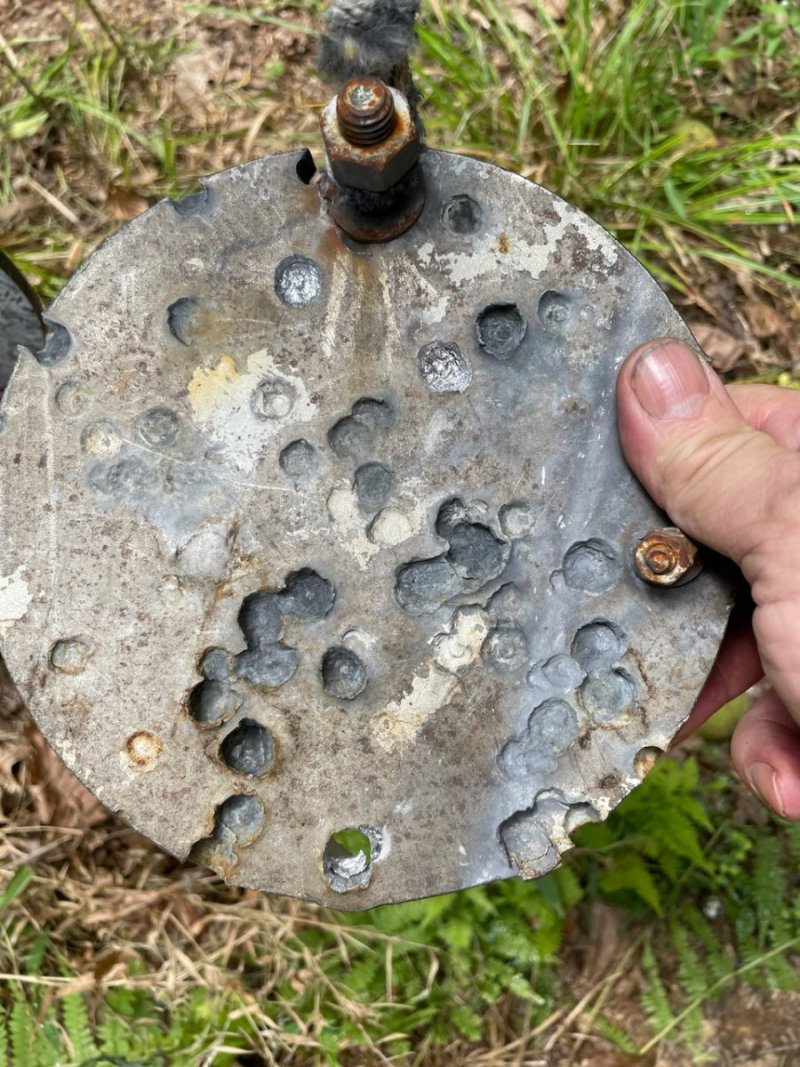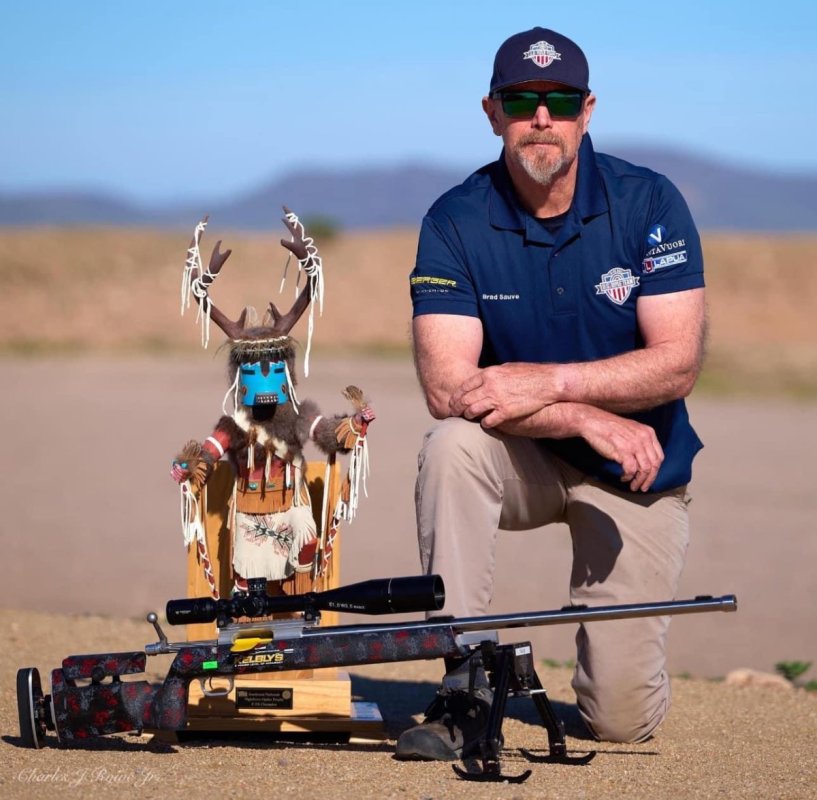With lpvo being what they are I would think a 0 moa would be fine.
Navigation
Install the app
How to install the app on iOS
Follow along with the video below to see how to install our site as a web app on your home screen.
Note: This feature may not be available in some browsers.
More options
-
ODT Gun Show & Swap Meet - May 4, 2024! - Click here for info
You are using an out of date browser. It may not display this or other websites correctly.
You should upgrade or use an alternative browser.
You should upgrade or use an alternative browser.
Howa 1500 308
- Thread starter Glockmania
- Start date
You transfer that through TruPrep?
A 20MOA base won’t hurt you when using an LPVO, and may come in very handy if you change to something else on down the road. Better to have it and not need it……..
While a tapered base provides more elevation travel via adding additional bias to the mechanical adjustment system in the scope, the other benefit that it provides is often overlooked.
It keeps the majority of your adjustment range in the "Clean" optical portion of the viewable glass. The illustration shows the viewable portion broken down into thirds. The top and bottom third are considered areas to have more visible optical trash in the field of view (FOV) while the center third is considered to be much more clean. By using a tapered base, it allows you to zero at the lower portion of the "Clean" optical portion and allowing you to maintain the majority of your adjustment travel in that "Clean" portion of your FOV.
The drawing also illustrates the math involved in determining your ability to zero at 100 yards. When you add the tapered base, it allows the erector tube to look lower than it could mechanically; hence increasing your elevation range while providing adjustment travel in your optimal zone. The erector tube in a scope looks down to move POI up and it looks up to move POI down as shown in the drawing.
The word trash is used to describe the characteristics of lesser optical quality; Chromatic and Spherical aberrations, curvature of field, fish eye effect, etc.
Even the best optics exhibit this trash when optics are viewed around the edges/curves of the glass. Some wayyyyy more noticeable than others.

A 20MOA base won’t hurt you when using an LPVO, and may come in very handy if you change to something else on down the road. Better to have it and not need it……..
While a tapered base provides more elevation travel via adding additional bias to the mechanical adjustment system in the scope, the other benefit that it provides is often overlooked.
It keeps the majority of your adjustment range in the "Clean" optical portion of the viewable glass. The illustration shows the viewable portion broken down into thirds. The top and bottom third are considered areas to have more visible optical trash in the field of view (FOV) while the center third is considered to be much more clean. By using a tapered base, it allows you to zero at the lower portion of the "Clean" optical portion and allowing you to maintain the majority of your adjustment travel in that "Clean" portion of your FOV.
The drawing also illustrates the math involved in determining your ability to zero at 100 yards. When you add the tapered base, it allows the erector tube to look lower than it could mechanically; hence increasing your elevation range while providing adjustment travel in your optimal zone. The erector tube in a scope looks down to move POI up and it looks up to move POI down as shown in the drawing.
The word trash is used to describe the characteristics of lesser optical quality; Chromatic and Spherical aberrations, curvature of field, fish eye effect, etc.
Even the best optics exhibit this trash when optics are viewed around the edges/curves of the glass. Some wayyyyy more noticeable than others.
I’d do a Talley base with a sig msr 1-10. It’s illuminated 34mm tube so good light comes with a good mount and it’s $500
Yes I picked it up on Saturday and thank you for the detailed info. I have watched a few videos and read some forms and everyone recommends the 20MOA.You transfer that through TruPrep?
A 20MOA base won’t hurt you when using an LPVO, and may come in very handy if you change to something else on down the road. Better to have it and not need it……..
While a tapered base provides more elevation travel via adding additional bias to the mechanical adjustment system in the scope, the other benefit that it provides is often overlooked.
It keeps the majority of your adjustment range in the "Clean" optical portion of the viewable glass. The illustration shows the viewable portion broken down into thirds. The top and bottom third are considered areas to have more visible optical trash in the field of view (FOV) while the center third is considered to be much more clean. By using a tapered base, it allows you to zero at the lower portion of the "Clean" optical portion and allowing you to maintain the majority of your adjustment travel in that "Clean" portion of your FOV.
The drawing also illustrates the math involved in determining your ability to zero at 100 yards. When you add the tapered base, it allows the erector tube to look lower than it could mechanically; hence increasing your elevation range while providing adjustment travel in your optimal zone. The erector tube in a scope looks down to move POI up and it looks up to move POI down as shown in the drawing.
The word trash is used to describe the characteristics of lesser optical quality; Chromatic and Spherical aberrations, curvature of field, fish eye effect, etc.
Even the best optics exhibit this trash when optics are viewed around the edges/curves of the glass. Some wayyyyy more noticeable than others.
View attachment 4780374
Yes I picked it up on Saturday and thank you for the detailed info. I have watched a few videos and read some forms and everyone recommends the 20MOA.
What’s your budget for the scope? I know you said a luepold 1-4 but what’s a monetary value? Like ~$500?
I have a leupold 1-4 hog plex and vortex strike eagle 1-8 that may end up on the rifle. I have been toying around with the idea of a 1-10. The 1-10 are either sig or primary arms.What’s your budget for the scope?
I have a leupold 1-4 hog plex and vortex strike eagle 1-8 that may end up on the rifle. I have been toying around with the idea of a 1-10. The 1-10 are either sig or primary arms.
10-4. I would just do a 20MOA base and 1-10. Not sure of the optical quality of a cheaper 1-10 but it’ll get the most flexibility out of your set up.
The sig 1-6 MSR is a really nice scope for what it is. I would imagine their 1-10 is of similar quality. Only concern is when you increase magnification range in cheap optics you risk losing image quality from the cheaper, multiple lenses.
Plenty of good info here. Only thing I will note is that 20 MOA on an LPVO is fine for your rifle and your use case. Canted mounts on an AR that is designed mostly for use at 1x can cause cause some weird eyebox issues. You will never see that on a gun designed be "cheeked". Just a note for those that are considering a LPVO for more traditional uses on an AR platform.
I was reading some reviews stating that is no possible to zero a 20 MOA base with a scope at 100 yards, is that true from you guys experience?
Similar threads
- Replies
- 61
- Views
- 1K








